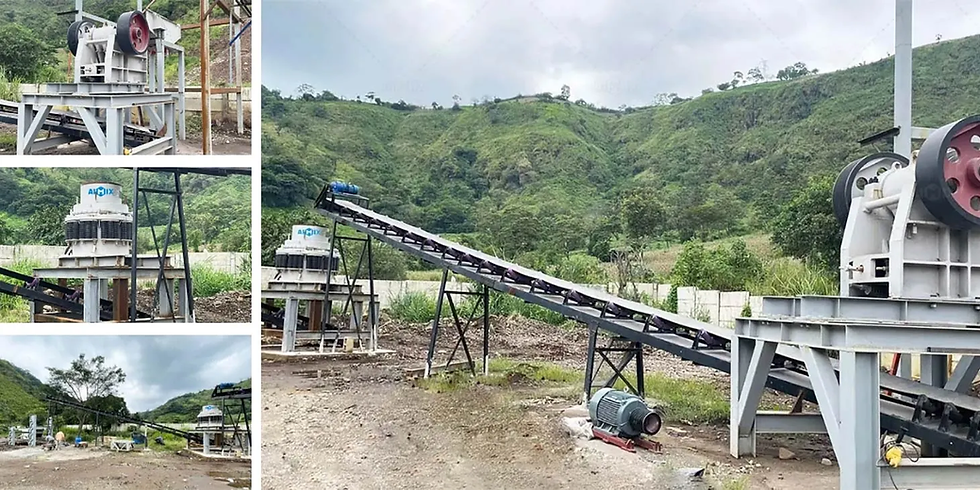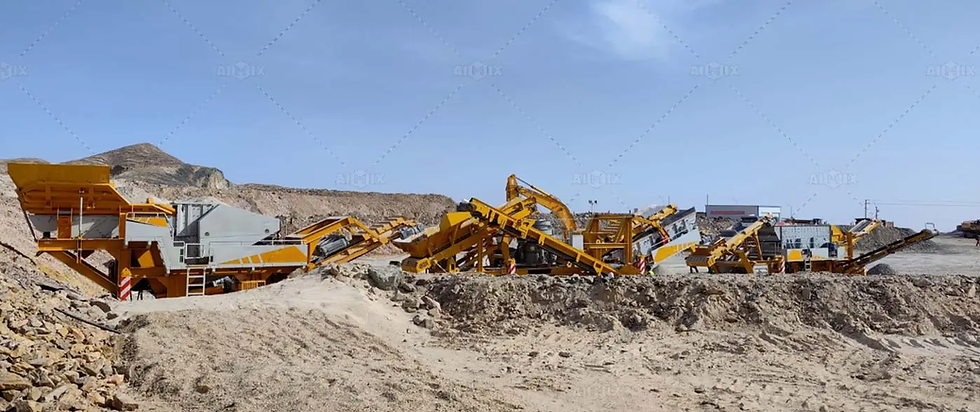How Gravel Crusher Machines Turn Raw Stone into High-Quality Aggregates
- aimixgroup china
- Mar 7
- 3 min read
Gravel crusher machines are the unsung heroes of the construction and mining industries, quietly transforming raw, unprocessed stone into high-quality aggregates that serve as the foundation for roads, buildings, and infrastructure. The journey from jagged rock to refined material is a meticulous process that involves brute force, precision engineering, and a dash of technological finesse. Without these gravel crusher machines, construction sites would be left grappling with inconsistent materials, skyrocketing costs, and logistical nightmares. The art of crushing is more than just breaking down stone—it’s about optimizing particle size, enhancing material strength, and ensuring that every grain of aggregate meets the stringent demands of modern engineering.

The Crushing Process: Breaking Down Raw Stone
Primary Crushing: The First Line of Attack
The process begins with primary crushers, the heavy-duty workhorses responsible for taking massive boulders and reducing them to more manageable sizes. Jaw crushers and gyratory crushers dominate this stage, using immense pressure to fracture and compress stone. Jaw crushers, with their simple yet powerful mechanism, clamp down on raw material, exerting force until the rock succumbs. Gyratory crushers, on the other hand, employ a conical crushing chamber to create a continuous crushing motion, ensuring a more uniform output. This initial reduction is crucial—it sets the stage for further refinement and prevents downstream machinery from being overwhelmed by oversized material.
Secondary and Tertiary Crushing: Refining the Output
Once the boulders have been tamed, they move on to secondary and tertiary crushers for further refinement. Cone crushers and impact crushers take center stage here, each with its unique method of breaking down material. Cone crushers employ a spinning mantle and concave surface to exert compressive force, gradually reducing stone size with precision. Meanwhile, impact crushers unleash sheer kinetic energy, hurling stone against hardened steel plates to create sharp, angular fragments ideal for construction applications. This multi-stage process ensures that aggregates are not only reduced in size but also shaped to maximize interlocking properties, crucial for road base and concrete production.
Producing High-Quality Aggregates: What Matters Most
Consistency in Particle Size Distribution
Not all crushed stone is created equal. High-quality aggregates must meet strict gradation standards, ensuring that particle sizes are distributed in a way that enhances compaction, drainage, and load-bearing capacity. Gravel crushers incorporate advanced screening systems to segregate fine material from coarse aggregates, guaranteeing that the final product meets project specifications. This level of control is vital for applications like asphalt production, where inconsistent particle sizes can compromise pavement durability.

Strength and Durability for Long-Lasting Infrastructure
Beyond just size, the mechanical properties of aggregates play a pivotal role in determining their suitability for construction. Crushed stone must exhibit sufficient hardness, resistance to weathering, and minimal flakiness to ensure structural integrity. Modern gravel crusher machines utilize wear-resistant alloys, precision-engineered crushing chambers, and adjustable settings to tailor aggregate characteristics, optimizing strength and durability for high-performance applications.
The Role of Technology: Enhancing Efficiency and Sustainability
Automation and Smart Crushing Systems
Gone are the days of rudimentary crushing operations. Today’s gravel crusher machines are equipped with automated control systems that regulate feed rates, monitor aggregate crusher performance, and adjust settings in real time. This not only maximizes efficiency but also minimizes energy consumption and operational costs. Advanced monitoring systems detect potential wear and tear, reducing downtime and extending machine lifespan—an essential factor in large-scale aggregate production.
Sustainable Crushing Practices
In an era of environmental consciousness, gravel crushing operations are evolving to reduce waste and minimize ecological impact. Modern crushers integrate dust suppression systems, noise reduction technology, and energy-efficient motors to lower emissions and improve sustainability. Additionally, recycling crushers repurpose old concrete and asphalt into reusable aggregates, further reducing reliance on virgin stone extraction. This shift towards greener practices ensures that aggregate production remains viable without depleting natural resources.
Conclusion
Gravel crusher machines are the backbone of aggregate production, transforming raw stone into the high-quality materials that shape our world. From primary crushing that tames massive boulders to precision refinement that enhances strength and durability, these machines ensure that construction projects are built on a solid foundation. With advancements in automation, sustainability, and efficiency, modern crushers continue to push the boundaries of what’s possible in material processing.



Comments